Peace Lilies: [Care, Sowing, Irrigation and Substrate]
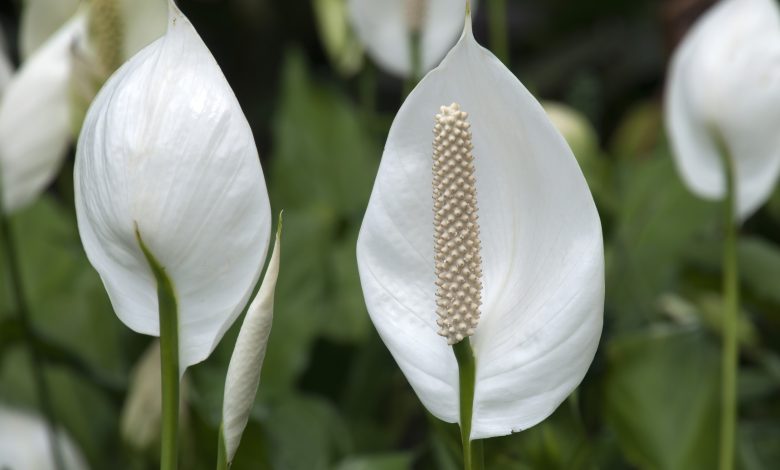
If there is any plant that naturally adapts perfectly well to indoor cultivation, that is preciselythe Peace Lily or Spathiphyllum,able to survive in closed spaces with little natural lighting.
It is also called peace lily.
Characteristics of peace lilies
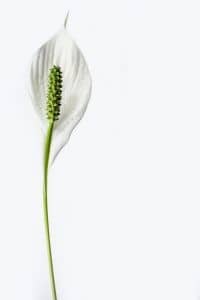 It is native to the tropical regions of the American continent, from northern Mexico to southern Brazil and practically abounds in all the islands of the Caribbean Sea.
It is native to the tropical regions of the American continent, from northern Mexico to southern Brazil and practically abounds in all the islands of the Caribbean Sea.
In Europe, however, only three species are recorded and in some areas of the Pacific and Asia it is also found to a lesser extent.
Some 36 different varieties of this unique plant have been typified which, as its name indicates, symbolizes Peace in the world, forgiveness of others and purity.
It is also often used as an ornamental plant.
It grows and resists without sun
One of its main characteristics is to resist indoors without the help of the Sun.
 And this is absolutely as incredible as it is true. In the wild, it tends to prefer places like the edge of streams, or the banks of rivers, but it manages very well to grow in places that lavish a lot of shade. That is why it adapts to closed environments, without natural light.
And this is absolutely as incredible as it is true. In the wild, it tends to prefer places like the edge of streams, or the banks of rivers, but it manages very well to grow in places that lavish a lot of shade. That is why it adapts to closed environments, without natural light.
It adapts perfectly to interior spaces
Another virtue is that its average size is ideal for integrating the plant into home decoration.
It does not generally exceed a meter in height and its greenish, lanceolate -shaped leaves expand from the inside out. This gives it exuberance, a harmonious appearance and therefore more and more professional decorators trust it to insert it into their proposals.
But how not to do it, if the white flower that he gives us is quite a curious spectacle.
A flower grows on its stems with unsurpassed elegance.
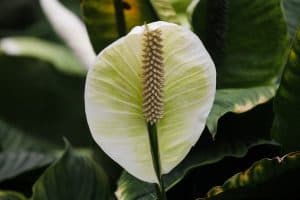 It gives off an aroma as delicate as it is exquisite that pleasantly invades the environment and coincides with another flower called Anthurium or anthurium, in the formation of a very similar spadix or central spike made up of small flowers grouped in a fleshy body located in front of a spathe or single petal. similar to a ship’s sail.
It gives off an aroma as delicate as it is exquisite that pleasantly invades the environment and coincides with another flower called Anthurium or anthurium, in the formation of a very similar spadix or central spike made up of small flowers grouped in a fleshy body located in front of a spathe or single petal. similar to a ship’s sail.
Temperature: Where to plant peace lilies?
They are very susceptible to temperatures above 24°C.
This is indeed a special demand of the Peace Lily that must be fulfilled to the letter. If a comfortable temperature is not maintained, its leaves will begin to turn brown until they dry completely.
It is also inadvisable to expose it to sudden temperature contrasts or natural or artificial air currents, because they affect its development and flowering.
Although this slender plant does not need much natural light, it does not like taking a bath in indirect sunlight from time to time, except in summer, when practically it is best to hide it from the sun’s rays, which tend to intensify in this period and burn it if bathed for a long time.
Substrate and Fertilizer: How do we prepare the land?
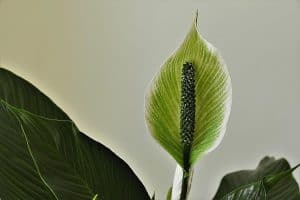 It is also vital to maintain a constant humidity of the soil that provides it with nutrients. Of course: conservative humidity, not a permanent puddle of water that damages the roots until they rot.
It is also vital to maintain a constant humidity of the soil that provides it with nutrients. Of course: conservative humidity, not a permanent puddle of water that damages the roots until they rot.
And especially in the summer this action takes on special importance.
Watering: How and how often to water peace lilies?
Another good recommendation is to sprinkle its beautiful leaves with water, with a frequency that depends on the high temperatures, a measure that will produce a refreshing effect on the plant.
If the irrigation is insufficient or excessive, it will not be able to bloom either.
 If you’re wondering how often to water a peace lily, one tip is to wait for the plant to drop a bit before watering.
If you’re wondering how often to water a peace lily, one tip is to wait for the plant to drop a bit before watering.
One of the great advantages in peace lily care is the fact that it sinks a bit when it needs water, so it will tell you when it is thirsty.
In general, water at least once a week and keep the soil moist. During the summer growing season, mist the leaves with soft or distilled water. Water your plant less often in winter.
Even if you forgot to water for a while and find your peace lilies dry, with the leaves flat on the edge of the pot, water and spray right away. You will be surprised how quickly the peace lily revives.
Did you know…?Peace lilies can be sensitive to chlorine.
If the municipal water system is heavily chlorinated, fill a container with water and then let it sit overnight so the chlorine can leach out before pouring it into the peace lily.
Peace Lily Care
 Reader, we are not going to lie to you. Peace lilies are delicate. Although planting it and enjoying it should not be extremely complicated if you follow a few guidelines.
Reader, we are not going to lie to you. Peace lilies are delicate. Although planting it and enjoying it should not be extremely complicated if you follow a few guidelines.
The peace lily earns the «simple» label for four reasons.
When it needs water, it tells you
First, it sinks when it needs water, and quickly revives after a long drink.
thrives in low light
Second, it thrives in low light conditions.
It is quite resistant to pests and diseases
Third, the peace lily is very hardy. An insect infestation or lack of watering can cause it to shrivel and turn pale, but it recovers quickly.
With frequent care is very grateful
Finally, with enough care and occasional cleaning of its leaves, the peace lily doesn’t seem to be the insect magnet that roses and other houseplants are.
They require the temperatures mentioned above since they grow and develop in tropical climates.
In addition, you must protect them from air and wind in case they receive it. In summer it will be convenient to use a sprayer daily to water the peace lilies, avoiding puddles in the soil and maintaining humidity.
Prune wilted or diseased leaves
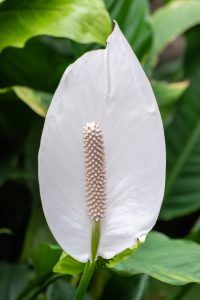 Another of the care that peace lilies will require is the pruning of any withered or diseased leaves. For this you can use a simple pruning shears.
Another of the care that peace lilies will require is the pruning of any withered or diseased leaves. For this you can use a simple pruning shears.
Brown or wilted peace lily leaves can often indicate a more serious problem. If it happens from time to time you may need water.
Pests, Diseases and Problems with Peace Lilies
Compared to other houseplants, the peace lily is relatively immune to insects and disease.
While they can have spider mites, aphids, and mealybugs, these pests can generally be kept under control with regular leaf cleaning.
If pests invade, spray the plant with an insecticidal soap.
Brown leaf tips can mean a lot of things, from overwatering, to overfertilizing, to a lack of moisture.
Learn to follow the signals that your plant gives you. If the leaves are darkening on the underside of the peace lily, it could mean that these older leaves are not able to compete with the faster growing younger leaves.
Beware of this: Lilies are poisonous
Although they are very beautiful plants, the leaves of lilies are usually poisonous. Therefore, we do not recommend having these plants in houses where there are babies, small children or pets likely to nibble them.
Are peace lilies dangerous for cats?
Peace lilies are listed by the ASPCA as one of the common houseplants that are poisonous to cats.
They contain oxalates which can irritate an animal ‘s mouth and stomach. However, since the irritation begins with the first bite, the animal stops eating the plant quite quickly, avoiding severe poisoning. Cats and dogs that ingest peace lily leaves begin to salivate profusely, shake their heads, and put their paws in their mouths.
Since cats are agile creatures known for their curiosity, the best way to protect them from harm is to not own any poisonous plants.

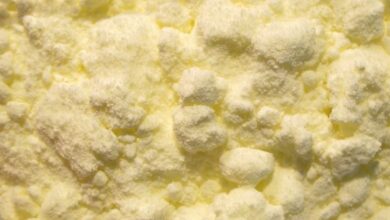
![Photo of White Flowers: [Complete List of 16 Plants + Images]](https://www.complete-gardening.com/wp-content/uploads/2022/08/white-flowers-complete-list-of-16-plants-images-390x220.jpg)

